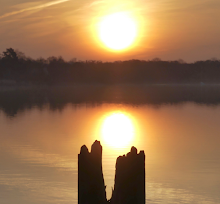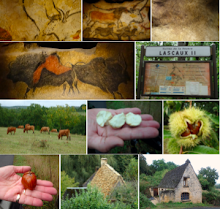Today we operated on Rive Gauche, the left bank of the Seine, i.e. the Latin Quarter. We began the beautiful spring morning by taking a stroll through the Jardin du Luxembourg.
Paris is said to be "the city of love" – and the city takes the relationship between the flowers and the bees seriously. In the city parks, and on top of the Parliament and the Opera, over 700 official hives are inhabited by happy bee families. Therefore, both flowers and bees get what they need; – and the city of Paris sells the honey online for 15 € per jar!
 |
| Bee town in Jardin du Luxembourg. |
We headed towards the Musée du Luxembourg and its exhibition about the Venetian Renaissance painter Tintoretto.
 |
| Autoportrait. Jacopo Comin (aka Tintoretto) 1518-1594. |
 |
| Tintoretto, 1538. Saint Paul's conversion. |
 |
| Tintoretto, 1540. The labyrinth of love. |
On our way farther into the Latin Quarter we passed this totally stoned lady in front of the Hungarian Institute.
Paris' second largest church is this one: Église de Saint-Sulpice. It is big, beautiful and full of enigmatic elements inside. The author Dan Brown got some key inspiration for his novel "The Da Vinci Code" from this church.
This astronomical gnomon inside the St-Sulpice plays an important role in the novel.
Read about the so-called enigmas here.
Yet another church nearby. This is Église Saint-Germain-des-Prés, Paris' oldest church still in use.
Surprisingly, the heart of a Polish king is buried here: Jan II Kazimir Vasa (1609-1672).
Then we walked to 6 Rue de Furstenberg, where the famous and celebrated painter Eugéne Delacroix (1798-1863) lived and had his studio.
 |
| From Delacroix' studio. |
By now we were in dire need of a caffeine fix so we found the tiny lane Cour du Commerce Saint André with the world's oldest café Le Procope and hurried inside.
We settled with our coffees and cakes between Napoleon Bonaparte's original hat (from his early years when he was just a lieutenant) –
– and these revolutionaries and notabilities from the roaring 1780s and 90s.
Thus boosted by beans, carbohydrates and history we took the metro to Quatre Septembre station, shopped groceries and reached our small flat.



































